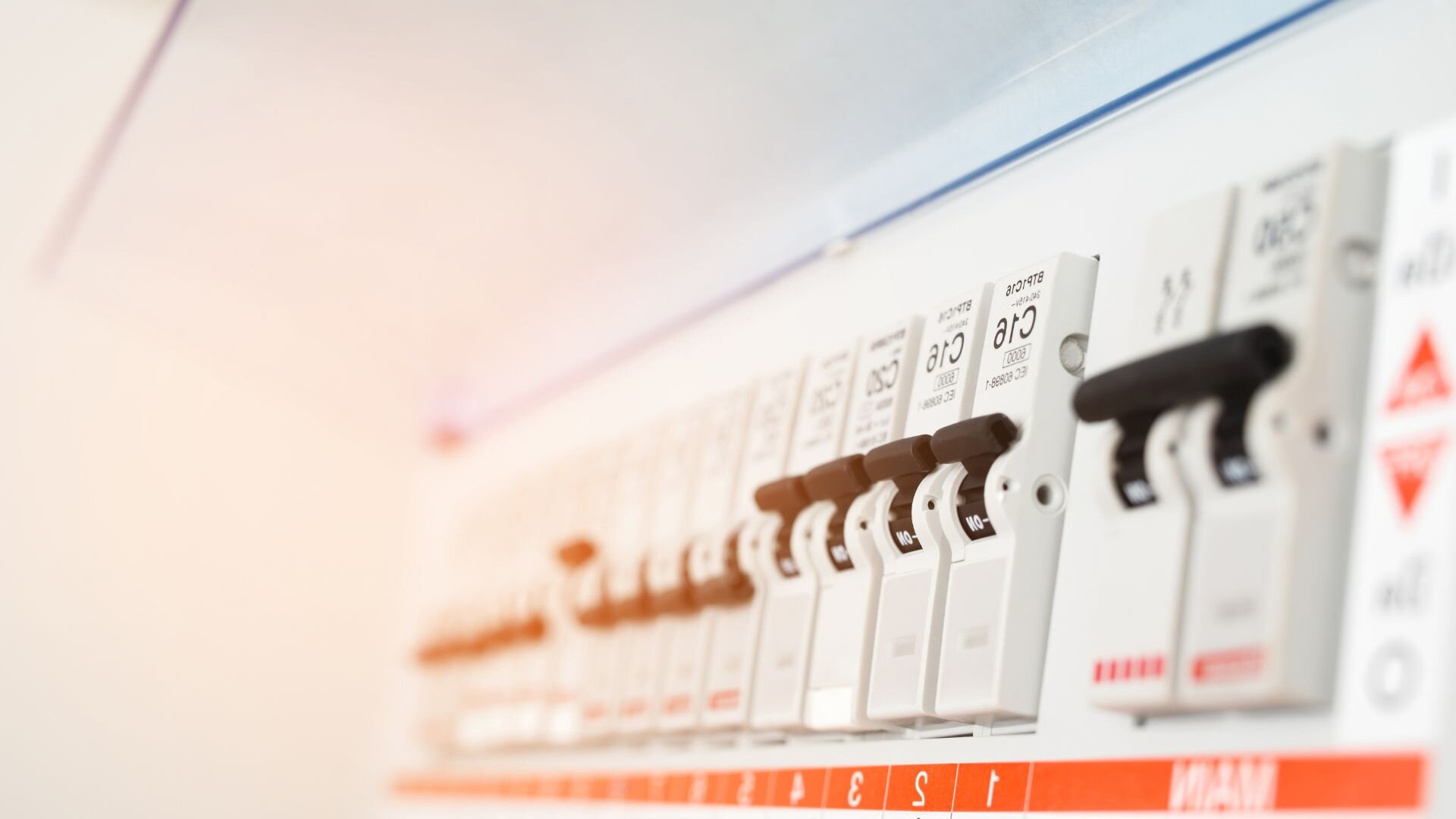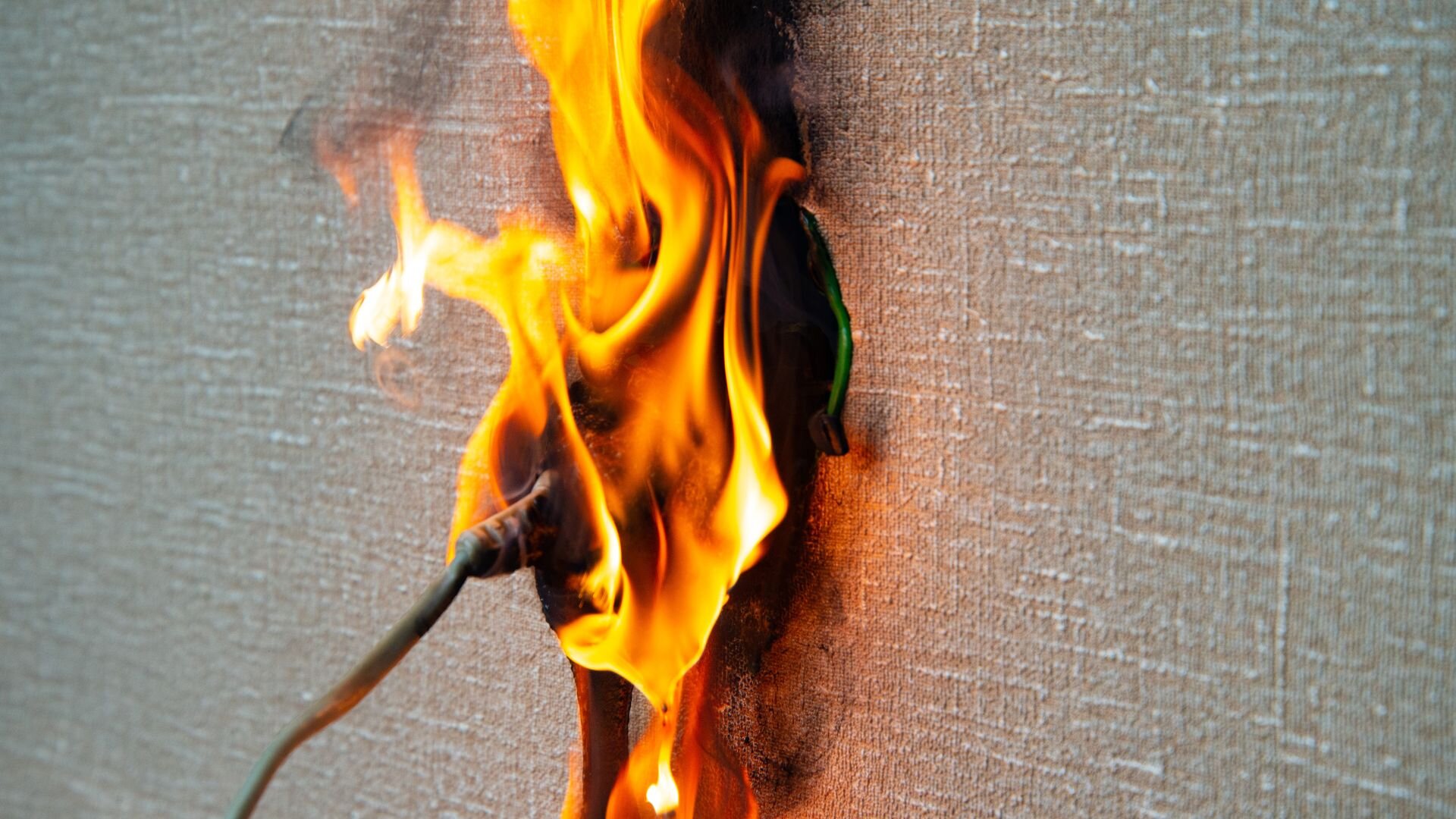In Australia, out of 35,109 recorded fire incidents, 942 were electrical fires, representing 2.68% of all ignitions. While this may seem like a small fraction, the dangers posed by electrical fires are disproportionately severe. These fires often occur without warning, leading to catastrophic damage, significant property loss, and, tragically, loss of life.
At Enersol, our Residential Electrician Gold Coast - Electrical fires can ignite from faulty wiring, overloaded circuits, or malfunctioning appliances—threats that are frequently hidden from plain sight. The good news is that such disasters are often preventable. Safety switches, also known as residual current devices (RCDs), are a critical line of defence in mitigating the risks of electrical fires.
How Safety Switches Work
Safety switches are crucial for keeping your home safe by preventing electrical fires and protecting against electric shock. Learn more about electrical renovation planning guide. Understanding how they work and why they are essential can help you maintain your home’s electrical safety.

Detecting Electrical Faults
Safety switches, or RCDs, monitor your home’s electrical currents. They spot electrical faults such as dodgy wiring or malfunctioning appliances and cut off power if there’s too much current. This quick action prevents issues like overloads and short circuits, nipping potential disasters in the bud.
Cutting Off Power Supply
If a safety switch senses a problem, it instantly cuts power to that circuit, keeping your home safe from fires and other risks. If it’s frequently tripping, this could indicate underlying electrical issues, and calling in a licensed electrician for a check-up is wise.
Importance of Installation
Having safety switches installed on all circuits, alongside circuit breakers and fuses, is essential for comprehensive protection. Regular safety switch testing and using the test button every three months ensure your safety switches work correctly, keeping your home safe from electrical accidents.
The Importance of Regular Testing
Regular testing of your safety switches is crucial to ensure they function correctly when needed. To test a safety switch, simply press the test button on your switchboard. This should immediately cut off power to the circuit, confirming the switch is working properly. You shouldperform this safety switch test at least every three months.
Skipping regular tests can lead to trouble. Over time, a safety switch might start acting up or become sluggish, making it less effective during real electrical hiccups. This could bump up the risk of fires or electric shocks.
Upgrading Old Electrical Systems
Older homes often have outdated wiring and safety mechanisms, posing significant risks. Many of these systems lack modern safety switches, making them more vulnerable to electrical faults and increasing the likelihood of electrical fires. Over time, wiring can degrade, and circuit breakers or fuses may no longer provide adequate protection.
Upgrading your home’s electrical system is essential to meeting current safety standards. Installing modern safety switches, also known as residual current devices, is a crucial step in this process.
These devices are designed to detect electrical faults and cut off power instantly, preventing potential hazards. Without Olderace a higher risk of electrical fires and electric shock, making without proper safety switches an upgrade necessary for your safety and peace of mind.
The Role of Safety Switches in High-Risk Areas

To ward off electrical hazards, safety switches must be placed in high-risk spots like the kitchen, bathroom, and outdoor areas. These places often deal with moisture and heavy appliance use, which can lead to electrical hiccups. For instance, kitchens juggle several appliances simultaneously, while bathrooms and outdoor zones face frequent water exposure.
Safety switches in these environments can quickly detect faults and cut off power before an electrical fire or electric shock occurs. For outdoor areas, it’s crucial to use weatherproof safety switches, which cally designed to withstand exposure to the elements. By instaInstallingropriate safety switches in these high-risk areas, you si significantly reducesnces of electrical accidents and ensure aensures home environment.
Protecting Your Family with Child-Safe Safety Switches
Young children are naturally curious, often exploring their environment by inserting objects into outlets or tampering with electrical devices. This curiosity can pose serious risks to their safety. Installing child-safe safety switches is an effective way to protect your family from electrical accidents.
These safety switches come with additional child protection features, such as tamper-resistant outlets, which prevent foreign objects from being inserted. They quickly cut off power if a fault is detected, reducing the risk of electric shock or fire. For parents, investing in child-safe safety switches is a crucial step in creating a secure home environment. By prioritising electrical safety, you can significantly lower the chances of accidents and keep your children safe from potential hazards.
Avoiding DIY Electrical Work
DIY electrical work may seem like a cost-effective solution, but it is both dangerous and illegal in Australia without proper licensing. Attempting to install or repair electrical systems, including safety switches, without the necessary expertise can lead to serious consequences. Incorrect installation or maintenance of safety switches can result in electrical faults, increasing the risk of electrical fires or electric shocks.
In addition, DIY electrical work can void insurance policies and lead to significant fines. To ensure your home’s electrical system is safe and compliant with Australian standards, it’s essential to hire a licensed electrician for any electrical work, including safety switch installation. Professional electricians have the skills and knowledge to protect your home and family from the dangers associated with faulty electrical work.
Knowing the Different Types of Safety Switches
Understanding the different types of safety switches available can help you choose the right protection for your home. There are three main types: plug-in, portable, and fixed safety switches.
Plug-in safety switches are designed for individual appliances and are easy to install. Simply plug the appliance into the switch, and then plug the switch into the power outlet. These are ideal for protecting specific devices, such as power tools or outdoor equipment.
Portable safety switches are versatile and can be used across multiple locations. They are particularly useful when using electrical equipment outdoors or in temporary workspaces, providing protection wherever you need it.
Fixed safety switches are installed directly into your switchboard and protect entire circuits throughout your home. This type is essential for permanent, comprehensive protection against electrical faults.
Choosing the right type of safety switch ensures you have the appropriate level of protection for different scenarios, keeping your home and family safe.
The Legal Requirements for Safety Switches
In Australia, safety switches are legally required in all new homes and rental properties. These regulations mandate that safety switches be installed on power and lighting circuits to protect against electrical faults and reduce the risk of fires and electric shock. Non-compliance with these laws can result in significant fines and legal penalties for property owners.
Beyond the legal implications, ignoring these regulations puts residents at serious risk of electrical accidents. Homeowners and landlords must ensure their properties meet current safety standards by having a licensed electrician assess and, if necessary, upgrade their electrical systems. Regularly checking compliance not only ensures legal adherence but also provides peace of mind that your home or business is as safe as possible.
The Cost of Safety vs. The Cost of Damage
The aftermath of an electrical fire can be devastating, both financially and emotionally. Beyond the immediate destruction of property, there are the costs of repairs, potential hospital bills due to injuries, and the emotional toll of losing irreplaceable personal items. The cost of installing and maintaining safety switches, on the other hand, is relatively low.
Safety switches are designed to detect faults and cut off power before a fire can start, making them a simple yet effective preventive measure. For a fraction of the potential cost of fire damage, you can invest in these devices to protect your home and loved ones. When considering the long-term value, safety switches are a smart, cost-effective investment that can save you from the far greater expenses—and heartache—of an electrical fire.
How Enersol Electrical Can Help
Safety switches are essential for preventing electrical fires and protecting your home and family from dangerous electrical faults. Whether you’re upgrading an old electrical system, ensuring compliance with legal requirements, or simply enhancing the safety of your home, having properly installed and maintained safety switches is crucial. Explore our Residential Electrician Gold Coast to learn more.
Enersol Electrical is your trusted partner in achieving this level of electrical safety. With years of experience, our team of licensed electricians specialises in the installation and maintenance of safety switches across all types of properties. We understand the importance of safeguarding your home or business and are committed to providing top-quality service that meets the highest safety standards.
Don’t leave your safety to chance. Contact Enersol Electrical today for expert advice on the best safety switch solutions for your needs.